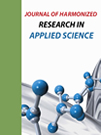EFFECTS OF DICHLORVOS INHALATION ON THE KIDNEY IN ADULT WISTAR RATS
Abstract
Author(s): Tela IA., Sagir MS.
Dichlorvos, (2, 2, dichlorovinyl dimethyl phosphate; DDVP), is an organophospharous compound used as insecticides and pesticides in homes and farms. It constitutes the active ingredient of Ota-piapia or Madarar piapia, a locally formulated insecticide in Nigeria. It is absorbed into the body via inhalation, dermal or oral routes and metabolized by the liver and excreted by the kidney. The frequency of renal failure is on the increase. The study aimed at assessing the effects of dichlorvos on the histology of the renal cortices in Adult Wistar Rats. Twenty - five adult wistar rats weighed about 195 – 400g were randomly selected and divided into five groups, two positive and negative groups and three treated groups exposed to 11.25mg/m3, 7.50 mg/m3, and 3.75 mg/m3, of dichlorvos in 96% (purity) ethanol solution and experimented for 28 days. The animals were sacrificed twenty four hours after the last exposure, the blood and the kidney tissues were collected for serum and histopathological analyses. The slides were observed under light microscope while the blood was run for serum analysis. One way analysis of variance (ANOVA) followed by Post – hoc test (Tukey) was conducted for the serum analysis. Graded degenerations in kidney cellularity were observed. There was significant difference (P < 0.001) in the serum electrolytes across the groups. Prolonged use of dichlorvos could be injurious to the architecture of renal cortex that might lead to renal failure. Keywords: Dichlorvos, inhalation, kidney, serum electrolytes










